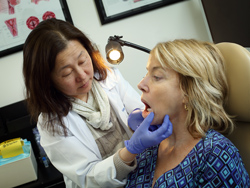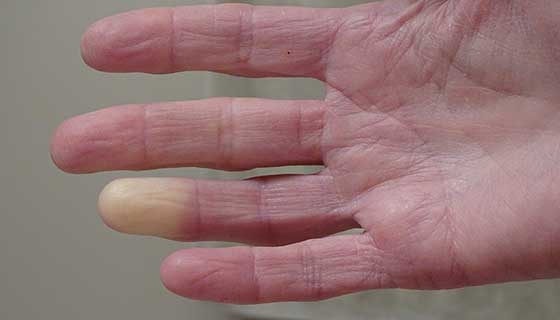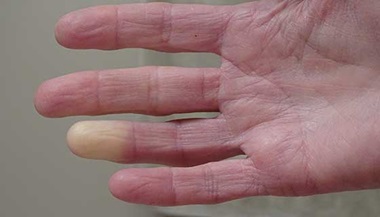Sjögren's Syndrome Diagnosis
Patience is key when diagnosing Sjögren’s syndrome. The main symptoms — a persistent feeling of dry eyes and dry mouth — can have many different causes and develop gradually, leading to a delay in considering Sjögren’s syndrome as the cause. These dryness symptoms can occur in other conditions — including chronic fatigue syndrome and fibromyalgia — and can be side effects of a variety of commonly used medications. On average, it takes three years from the time symptoms are noticed to reach a Sjögren’s syndrome diagnosis.
How Is Sjögren’s Syndrome Diagnosed?
Unfortunately, there isn’t one test that can tell if you have Sjögren’s syndrome. Your doctor must carefully review all of your symptoms to rule out any other potential causes. He or she may send you to see specialists, such as a rheumatologist, ophthalmologist or dentist and/or oral medicine specialist to look for key elements of the disease such as an insufficient tear film on your eyes, decreased saliva production, salivary gland inflammation and an underlying autoimmune disorder.
Diagnosing Sjögren’s syndrome requires gathering a lot of information, which your doctors will collect from a combination of tests on your eyes and mouth, blood and urine tests, and biopsies. These will be in addition to taking a medical history and performing a physical exam, the results of which may determine the tests your doctors will perform.
Once they establish that you have Sjögren’s syndrome, they’ll perform more tests to understand the severity of the disease and its effect on other parts of your body.
A Revealing Biopsy for Sjogren’s Syndrome

Johns Hopkins’ otolaryngologist–head and neck surgeon Jean Kim has developed a highly effective biopsy technique that significantly improves our ability to diagnose Sjögren’s syndrome. Working with patients in the Jerome L. Greene Sjögren’s Syndrome Center, she’s perfected a technique for biopsy of the minor salivary glands in the lower lip.
Specific Tests for Sjögren’s Syndrome
To make a Sjögren’s syndrome diagnosis, doctors must see specific antibodies (blood proteins) in your blood. They also need to see a pattern of inflammation, found most often on the salivary glands of your lips, which is characteristic of Sjögren’s syndrome.
Your doctor may recommend some or all of the following tests:
- Blood and urine tests, to look for the presence of antibodies common in Sjögren’s syndrome. The results of an ANA (antinuclear antibody) test will determine if you have an autoimmune disorder.
- Schirmer’s test, to see if your tear glands are producing enough tears to keep your eyes moist.
- Ocular surface staining to look closely at the surfaces of your eyes for damage and dryness.
- Salivary gland function scans, which look at the glands on the sides of your neck, below your ears and under your jaw.
- A biopsy of your lip to look for inflammation of the glands that produce saliva and tears. This test can determine the type of inflammation and the severity. A biopsy of the lip is performed because the salivary glands just under the lip’s inner surface are the easiest glands to access.
- Sialometry, which measures the flow of saliva.
- Ultrasonography of the major salivary glands to reveal characteristic structural changes that can aid in diagnosis.
After You’ve Been Diagnosed With Sjögren’s Syndrome
Once you’re diagnosed with Sjögren’s syndrome, you’ll work with your doctors to develop a treatment plan. The severity of the diagnosis will determine extent of the plan.





